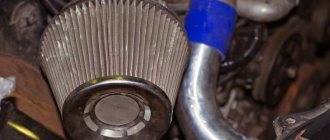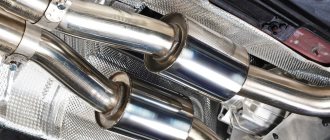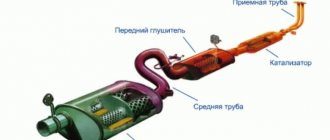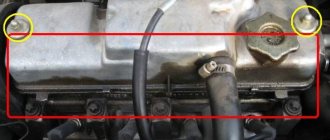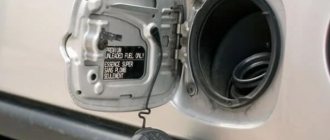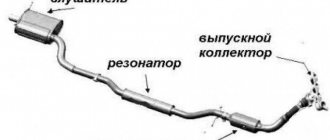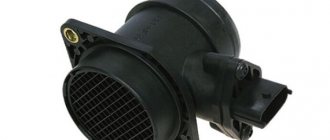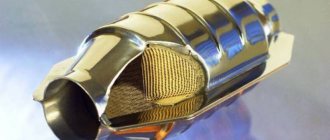08.11.2019
Modern cars are equipped with increasingly advanced exhaust systems. This is partly due to the fight for environmental safety, and partly to the desire to reduce noise while driving. To achieve minimal noise, they often resort to a method such as installing a flame arrester instead of a resonator.
The elements of the system operate under conditions of high temperatures and aggressive influence of the external environment, so they often become unusable over time. There is a trend on the market towards the unification of all exhaust system spare parts, so you can easily select a part for your car model, this also applies to flame arresters and resonators. They are available for quick installation with a minimum amount of cutting or welding.
However, it is recommended not to replace the resonator with a flame arrester yourself, but to contact a specialist.
What happens if you remove the exhaust system resonator?
What happens if you remove the exhaust system resonator?
Some owners of their cars, when faced with a breakdown of the exhaust system resonator, simply cut it out and weld in its place a pipe of the same diameter as the exhaust pipes. This raises a completely reasonable question: is it possible to remove the resonator, and what will happen if the resonator is cut out? The questions are not as simple as they might seem, and the answer to them is worth taking a closer look at.
Exhaust system functions
The exhaust system of a car has several functions, which can be schematically defined as follows:
- correct removal of exhaust gases from the engine outside the vehicle;
- reduction of acoustic waves arising from the operation of the motor;
- reduction of exhaust gas temperature;
- distribution of shock waves in the gas environment that arise during cylinder operation.
Depending on the engine size and the number of cylinders, a certain amount of exhaust gases enters the exhaust system; it is under these parameters that the configuration of the exhaust system is selected, as well as its composition and the diameter of the exhaust pipes. The exhaust system at the car manufacturer is calculated in such a way that the vacuum zones that appear in the manifold help to better fill the cylinder chambers with a new portion of the fuel mixture. In this case, all exhaust components play an important role and influence this process to varying degrees.
Is it possible to remove the resonator?
Is it possible to cut out the resonator? This question is best answered in light of the basic functions of the exhaust system and the role of the resonator in them.
If you drive without a resonator, then:
- the exhaust sound will become louder (even unpleasant and prohibited by regulations, its level depends on the car and engine speed), especially in the low-frequency range, since it is the resonator that is responsible for dampening low sounds;
- the temperature of the exhaust gases in the muffler will increase, which will reduce its service life;
- the configured (factory) distribution of shock waves in the gas environment will be disrupted and the vacuum zones will change, which can lead to a loss of power;
- the adjusted fuel consumption will be disrupted.
If your muffler resonator has become unusable, then the best solution would be to replace it with an original part or an exact copy of the original. Don't experiment. Although your car will continue to drive, despite the increase in noise, negative consequences will affect one way or another.
If you were thinking about how to replace the resonator, then none of the possible options plays a full role. Although some of the problematic issues will be resolved.
It is possible to completely remove the resonator only with a comprehensive tuning of the exhaust and some engine components, followed by their mutual adjustment. Simply removing the resonator from a stock exhaust system will have negative consequences.
Source of the article: https://vyhlopnie-systemi.com.ua/ru/vihlopnaya-systema/chto-budet-esli-ubrat-rezonator-vyihlopnoy-sistemyi/
Classification
Mechanical resonators are usually divided into two types: storage and instantaneous.
A feature of the accumulative converter is the accumulation of external influence activity by reducing the oscillation frequency inside the device. If we look from a scientific point of view, then any resonator that has a natural oscillation frequency higher than the acting force can be called accumulative.
A striking example of this principle is an ordinary swing.
The instantaneous action part is so called due to the completion of one stage of oscillation for a period not exceeding the period of action of the external force. Its power can be increased by distorting the input and output forces, the power consumption of minor frequencies and the consumption of external space temperatures.
Read more about what an exhaust system resonator is needed for
The device is a damper for vibrations of sound waves (mostly low-frequency), triggered the moment the exhaust gases leave the combustion chamber. This process is called resonating and is considered the main function of the part.
Another explanation for why a resonator is in the exhaust system is to increase the useful power of the power plant. For this purpose, sports cars are specially modified, replacing the standard muffler resonator with an improved version and placing it directly behind the forward flow.
Removing the catalyst
Hephaestus car service specialists will quickly, competently and as carefully as possible remove the catalyst and keep the resonator on your car intact and in good working order. Next, our technicians will correctly disable the lambda probe and reprogram the ECU (electronic engine control unit).
This repair of Renault, Peugeot, Audi, Volkswagen, Citroen, Ford, Honda, Hyundai and other brand cars is absolutely affordable, 100% correct and safe. On our part, chip tuning is performed at a professional level - with a long-term quality guarantee!
What happens if you remove the resonator
This is not advisable for the following reasons:
- The exhaust system will work much louder, the sound will exceed the norms acceptable to the human ear, and will become unpleasant. This is especially true in the low frequency range.
- Fuel consumption will increase because the corresponding settings will be lost.
- Since there is a direct connection between the muffler and the resonator, the muffler will quickly fail due to an increase in the temperature of the exhaust gases.
- The engine will lose power because the correct distribution of shock waves among the gas will be disrupted.
Only comprehensive tuning of the exhaust system with special adjustments and installation of new elements can serve as a reason to abandon the exhaust system resonator. However, many drivers remove the part for other reasons - most often, if it is burnt out or wrinkled, but there is no money for a new one. This is a fundamentally wrong strategy - the costs that long-term driving without a resonator will entail are much more noticeable than simply purchasing a new spare part for 1-5 thousand rubles (depending on the make of the car).
Chip tuning
We, as a professional car service center with many years of experience in versatile car repairs, officially declare to you that a flame arrester is not quite the right solution to problems with unusable catalysts and a failed lambda probe.
Instead of installing a flame arrester, it is much better to leave the original resonator on the car. It is much better to simply remove the catalysts from the exhaust system and perform proper chip tuning. Moreover, our chip tuning is inexpensive and is backed by the longest possible quality guarantee!
Operating principle and types of resonators
The device works as follows:
- Exhaust gases are generated in the combustion chamber of a car.
- Gases are removed from the cylinder through the exhaust valve.
- At high speed they move along the exhaust manifold and exhaust pipe. Their temperature can reach up to 650°C.
- Exhaust gases enter the catalyst, after which they enter the resonator - a free cavity equipped with 1 or several chambers. The chambers are equipped with pipes with holes. When waves pass through them, they are absorbed.
Why is it most problematic to design an exhaust resonator for sports cars? This is due to the fact that the device must simultaneously reduce noise levels and not create obstacles to the passage of exhaust. From a physical point of view, the resonator operates according to the law according to which gases, moving at high speed in a narrow space, sharply lose speed when they fly out into a wide place, and along with the speed, energy is lost.
In addition to conventional resonators, various improved types are now available. Between their layers there is a shell with thermal insulation - thus the body receives additional protection from overheating. A combined exhaust system resonator device is also used, consisting of two parts: the first is a traditional design, and the second is filled with basalt fiber or other noise absorber.
Device
The muffler resonator is a multilayer structure consisting of the following elements:
- intake and exhaust resonators;
- filter resonator.
All these components are offset relative to each other. This displacement allows you to change the direction of gas flow and smooth out their pulsation. In addition, the gas flow, passing through the chambers, experiences sequential contraction and expansion, which also helps to equalize the supply of gases through the exhaust system.
The inlet and outlet resonators respectively receive and discharge the gas flow.
Entering the filter element, gases pass through reflectors - partitions that divide the internal space of the unit into uneven volumes (cavities). Perforation (the presence of holes on the surfaces of the internal parts of the resonator) facilitates the passage of gases into the cavity and back. As a result of mixing of flows and friction of their particles in the holes, vibrations of the gas mixture are damped and its movement is leveled. Slowing down and smoothing the movement of gases also leads to a reduction in noise.
Modern designs additionally use noise and heat insulation materials.
Classification
Resonators can be classified according to the type of engine for which they are intended. Interestingly, the presence or absence of this part affects the performance of two-stroke and four-stroke engines differently. Removing it from the exhaust system of a two-stroke engine will result in reduced power and increased fuel consumption. In the case of a four-stroke engine, on the contrary, the power will increase by about 15%. However, such a design change is completely unjustified from the point of view of comfort and ecology.
Resonators can also be divided by the number of barrels. Resonators with two barrels instead of one provide better comfort, but in this case the power characteristics of the car suffer more.
Common problems with resonators
The most common types of breakdowns are:
| Problem | Possible reason | Solution |
| The running engine makes a lot of noise | The resonator does not work properly and does not dampen the resonance of the exhaust system. Possibly burnt or broken welds | Replacing spare parts or welding elements again, depending on the degree of damage |
| You hear rattling or other strange noises in the muffler | The resonator is most likely burned out | Replacing a spare part |
| Engine power decreases | The muffler is clogged with soot (this situation is called coking). To clarify the prerequisites for this, a complete diagnosis is required, including valve timing, ignition system and fuel assembly composition | If the resonator body is in good condition, then it is enough to clean the resonance chamber inside. Otherwise, it is easier to make a replacement than to repair |
Tags
Replacement of mufflers Manufacture of mufflers Sale of mufflers Muffler repairs Manufacture of mufflers muffler resonator between the muffler and In the muffler is heard Muffler cloggedTuning of the exhaust systemexhaust gases leave Car repair Car combustion is formed to use the car still the car engine. The tasks of the car resonator Car systems of sports cars use a car resonator
motor need article and time cause signs replacing faulty car unit
Exhaust manifold: flame arrester instead of resonator
This is the part of the exhaust system that takes on the main temperature loads. It is the manifold that first encounters the wave of heat escaping from under the engine exhaust valves. Because of this, it received the name flame arrester, because the collector receives fire flows from the engine and cools them. The first flame arresters were made exclusively of cast iron to combat high temperatures. Currently, 2 materials are used depending on the vehicle configuration:
- cast iron;
- heat-resistant, stainless steel.
Resonator flame arrester, what to choose?
To understand whether it is worth installing a flame arrester instead of a resonator on your car, you first need to understand the structure of these elements of the exhaust system.
Operation of the flame arrester
Modern requirements of the Euro protocol, especially Euro-5, very strictly regulate emission standards for cars driving on the streets of European cities. Despite all the tricks of the developers of distributed fuel injection systems, the so-called “injection” cars, CO particles still remain in the exhaust, polluting the atmosphere. To combat them, a special flame arrester with a particulate filter was developed. This expensive, high-tech device is capable of converting CO particles in exhaust gases into ordinary water. It reduces engine power by 10-15%.
General meaning
Mitsubishi Galant American, AT Logbook Replacing the muffler pipe gasket Fa1 740-908
Those who conceived and invented the first cars used mufflers of the so-called direct-flow operating principle.
Over time, such exhaust systems began to become a thing of the past, and leading American and European manufacturers came up with a more complex mechanism. Unlike direct-flow exhaust, it made it possible not only to reduce the noise level that the engine produced during operation, but also to reduce the toxicity of gases emitted into the atmosphere.
In general terms, the operation scheme of a modern exhaust system is much more complex than in the case of the direct-flow type, and therefore has several working elements at once, each of which, in turn, has a rather complex design. Their constant interaction makes it possible to significantly reduce noise, increase environmental friendliness and even reduce fuel consumption, which especially significantly affects the owners’ wallets and their desire to own a particular passenger car in the future.
Resonator or flame arrester
And here is the most important question: what should you choose - a resonator or a flame arrester?
Many Russian car owners are getting rid of the flame arrester. The fact is that over time, the working parts of this device require mandatory replacement. The part is expensive even on domestic cars, let alone foreign cars. In addition, the flame arrester greatly reduces engine power. And here three replacement options appear before everyone:
- Installation of a direct-flow flame arrester.
- Replacement with a resonator with dismantling the factory one.
- Installation of an additional resonator in the flame arrester.
Each of them has its own advantages and disadvantages. Therefore, each needs to be considered separately, at least briefly.
Why do they replace?
I won’t tell anyone a secret if I say that the decision to replace the catalyst with a flame arrester is largely due to the economic component. That is, the car owner simply wants to save money.
Just look at the cost of this element.
If we take into account even domestic cars, the price tag will look impressive. Now imagine that your VAZ has already covered about 200-300 thousand kilometers
And here the need arises to change the catalyst. Such a purchase will cost 50-70 thousand rubles. Agree, the amount is more than serious. And compare it with the cost of a flame arrester, the price of which is several times less. Some even make it with their own hands from a piece of pipe, making many holes in it. Then the price will be completely zero.
If you decide to install such a design for yourself, do not forget about the mandatory equipment of a stronger with blende. Decoy, catalyst emulator, lambda decoy. Call it what you want. This will not change the essence.
The lambda decoy serves to correct the incoming signal from the oxygen sensor to the electronic control unit of your car. Moreover, it is necessary to install such a device if a flame arrester is installed in place of the catalyst.
Without doing this, the ECU will begin to perceive the operation of the exhaust system as problematic, and the emergency mode of operation of the internal combustion engine will begin to constantly turn on. This will result in a decrease in engine life and an increase in fuel consumption.
Similar designs, made from stronger and blende, can be installed on any car:
The use of deception should not be ignored. You already know about the consequences of such a rash decision.
Advantages and disadvantages
In conclusion, I propose to look at the pros and cons, that is, at the possible negative and positive consequences if you replace the standard catalyst with a not quite standard flame arrester.
The positive aspects include the following:
- lower costs for the purchase and installation of a stronger;
- the possibility of switching to cheaper fuel of lower grades;
- increase in engine power;
- protection of the engine from breakdowns.
It is a mistake to think that the flame arrester ruins the engine. Everything happens differently. It becomes easier for the motor to work. Problems arise only if you refuse to cheat and incorrectly configure the ECU
Therefore, it is important to contact specialists
Now as for the shortcomings. The disadvantages or consequences will be:
- the level of harmful exhaust gas will increase;
- You will definitely have to flash the ECU if snag is not used;
- The service life of the muffler will be reduced.
As you can clearly see, there will be no serious consequences if you install it correctly and use high-quality components. At many points you can even win.
It's up to you to decide whether to install a flame arrester or not, or buy a new expensive catalyst.
Thanks everyone for your attention! Subscribe, leave comments and ask relevant questions!
Watch this video on YouTube
Flame arrestor with built-in resonator
There is an option to remove the factory resonator and install a resonator in place of the particulate filter.
This option is also interesting. But this is in purely technical terms, simply by moving to the place of the flame arrester, the resonator allows you to establish a forward flow all the way to the muffler. The factory assembly of the additional muffler is cut out and inserted directly into the forward flow of the manifold after connecting the four pipes. There will be no special changes compared to the first option, just one thickening will be removed under the bottom of the car. Well, as an option, the factory resonator is not removed, but a homemade one is installed as an addition. Or, which is much more reliable, purchase a ready-made flame arrester with a built-in resonator. This is a very effective option in terms of reducing exhaust volume. The only drawback is that the engine power practically does not increase; the increase will be barely 1.5%. But the engine will really whisper.
Repair
Chassis device Anti-roll bar Anti-roll bar Self-propelled chassis Self-propelled chassis Car chassis device, purpose Car chassis device, purpose Car chassis device Chassis device The
muffler resonator is subject to repair only if holes form in it. For this you will need:
- piece of tin;
- metal screws for attaching a tin “patch”;
- sandpaper;
- drill and metal drill bit;
- putty and hardener.
The operating procedure is as follows:
- Cut a plate from tin that is larger in size than the damage that is supposed to be repaired.
- Clean the surface on which the patch will be installed.
- Drill several holes in the body and plate.
- Using putty and hardener, install the plate in place.
- Secure the patch using self-tapping screws.
- You can start operating the car after the putty has hardened.

